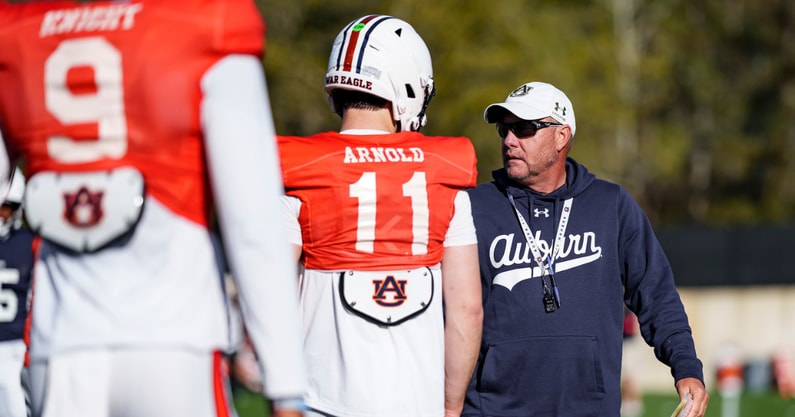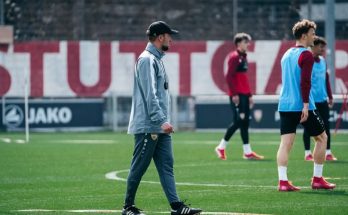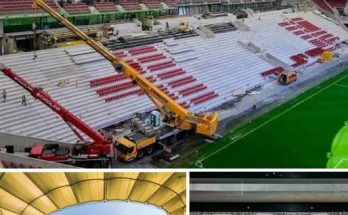Heading into the summer, Auburn University finds itself at a critical crossroads, grappling with questions that could define the trajectory of its athletic programs and institutional identity for years to come. While Auburn’s rich history of competitive success and passionate fan base provides a solid foundation, the biggest question facing Auburn heading into the summer isn’t about past glories or isolated achievements. Rather, it revolves around how the Tigers will navigate the evolving landscape of college athletics — specifically, how Auburn will build and sustain competitive excellence amid shifting dynamics in recruiting, coaching stability, NIL (Name, Image, Likeness) opportunities, and athlete development. This question is not simple; it is multifaceted and carries significant implications not only for Auburn’s football program but also for its broader athletic department and campus community.
To understand the gravity of this question, one must first recognize Auburn’s current position within college athletics. Auburn is a storied program, especially in football, boasting national championships, SEC titles, and a loyal fanbase known for its fervor. Yet, the past few years have presented challenges that threaten to disrupt Auburn’s place among the SEC elite. Coaching changes, inconsistency on the field, recruiting battles with powerhouse programs like Alabama, Georgia, and LSU, and the transformative impact of NIL on how athletes weigh their options have all added complexity to Auburn’s path forward. As the summer approaches — a pivotal recruiting and preparation period — Auburn’s leadership faces the task of addressing these challenges head-on.
One of the most visible concerns is Auburn’s ability to recruit and retain top talent. Recruiting has always been the lifeblood of college football success, and in the SEC, the stakes are even higher. Auburn competes in one of the most talent-rich conferences in the country, where rival programs consistently secure commitments from the nation’s most coveted prospects. Over the past few years, Auburn has had some high-profile recruiting wins but has also seen promising targets slip away to rivals, underscoring the increasing difficulty of building a consistently elite roster. The summer represents a crucial window to solidify verbal commitments, host official visits, and leverage Auburn’s unique selling points — including its facilities, tradition, and campus environment — to stand out in an overcrowded marketplace.
Yet recruiting is no longer just about coaching charisma or program prestige. The NIL era has fundamentally altered the calculus for recruits and their families. Athletes now have opportunities to monetize their personal brands through endorsements, sponsorships, and social media deals. For Auburn, this raises important questions about the program’s capacity to support players’ off-field endeavors while maintaining team cohesion and focus. How will Auburn create an environment where athletes feel supported in maximizing their NIL potential without distractions? Will Auburn be able to attract high-profile NIL partners that can rival what other SEC programs offer? These considerations add layers of complexity to the traditional recruiting narrative and require a proactive approach from Auburn’s athletic department.
In addition to recruitment and NIL, coaching stability is a major element shaping Auburn’s summer outlook. The Tigers have experienced coaching turnover in recent years, with shifts in leadership that have caused uncertainty among players and staff. Coaching continuity is essential not only for tactical consistency but also for fostering trust and culture within the team. The summer months often set the tone for the season, with training camps and summer workouts reflecting the coaching staff’s philosophy and expectations. Auburn’s ability to retain a coaching staff that commands respect, develops talent, and cultivates a winning mentality will be vital in determining whether the program can rebound and sustain competitiveness.
This coaching question extends beyond just the head coach. The entire support structure, including coordinators, strength and conditioning staff, and player development personnel, plays a crucial role in shaping Auburn’s future. The summer is a time for these coaches to implement new strategies, build relationships, and prepare athletes mentally and physically for the grind of SEC competition. Auburn’s success in aligning its coaching vision with player potential will be a decisive factor in the program’s trajectory.
Athlete development also looms large in Auburn’s summer considerations. Talent acquisition is only the first step; maximizing that talent through effective training, nutrition, mental health support, and injury prevention is equally critical. The summer offers a unique opportunity for Auburn’s trainers, nutritionists, and sports psychologists to work closely with athletes, helping them reach peak performance levels before the fall. In a conference where margins of victory are often razor-thin, the difference between a good program and a great one can hinge on how well it develops its players. Auburn’s investment in these areas, along with its adaptability to new sports science trends, will be tested in the months ahead.
Beyond football, Auburn’s other athletic programs also face pressures that compound the overall question of sustaining competitiveness. Basketball, baseball, and other sports programs require similar attention to recruiting, coaching, and athlete development. Auburn’s commitment to providing a well-rounded athletic experience that balances competitive success with academic achievement and personal growth will shape the university’s reputation and appeal. The summer months provide a natural opportunity for cross-program collaboration, facility upgrades, and strategic planning that can elevate Auburn’s entire athletic department.
Another important facet of Auburn’s summer challenge involves fan engagement and institutional support. Auburn’s fan base is passionate and deeply invested in the program’s fortunes, and maintaining that enthusiasm is crucial. Summer often involves outreach efforts, alumni events, and community engagement that keep the Auburn spirit alive between seasons. The university’s ability to connect with its supporters, share a compelling vision for the future, and demonstrate progress on key issues will influence morale and resources available for athletic initiatives.
Moreover, Auburn must navigate broader institutional questions related to diversity, equity, and inclusion within its athletics programs. These issues are increasingly important to recruits, families, and the wider community. Auburn’s approach to creating an inclusive environment where all athletes feel valued and supported will impact recruiting and retention as well as the overall health of the programs.
Financial considerations cannot be overlooked. The economics of college sports continue to shift dramatically. Television deals, conference revenue sharing, and the costs associated with NIL compliance and facilities upgrades all play into Auburn’s decision-making. The summer is a time when budgeting and strategic investments are finalized, making it essential for Auburn’s athletic department to balance ambition with sustainability.
Summing up, the biggest question facing Auburn heading into the summer is how the university will position its athletic programs to thrive amid these multifaceted challenges. This is not a question that can be answered with a quick fix or by focusing on a single factor. It requires a comprehensive strategy that integrates recruiting, NIL support, coaching stability, athlete development, institutional values, fan engagement, and financial management. Auburn’s response to this question will reveal much about its vision for the future — whether it aspires to merely compete or to reclaim and sustain its place among the elite of college athletics.
The stakes could not be higher. Auburn’s identity is closely tied to the success of its athletic programs. The pride of its alumni and the excitement of its current students depend in large part on the Tigers’ ability to perform on the field and court. As summer approaches, Auburn stands at a pivotal moment, tasked with turning questions into answers and challenges into opportunities. How Auburn addresses the biggest question facing it this summer will set the tone not only for the next season but for the next era of Auburn athletics. It is a moment filled with uncertainty but also tremendous potential — a defining chapter waiting to be written.



